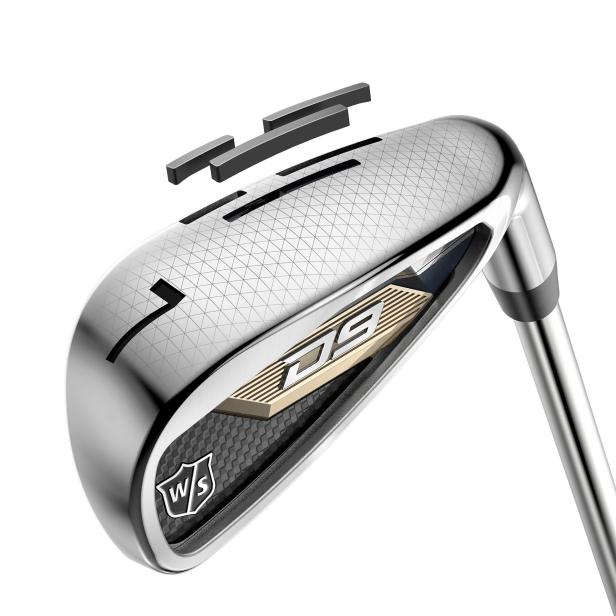WHAT YOU NEED TO KNOW: A low center of gravity along with a new Power Hole 2.0 design driven by Wilson’s Intelligent Design Computer Simulation process help maximize ball speed and forgiveness across the face of the D9 irons.
PRICE: The seven-piece Wilson D9 irons will be available Jan. 26 ($650 in steel, $750 in graphite).
THE DEEP DIVE: Often club design is about making compromises and like a good negotiation, you don’t get everything you want, but you get enough of the things that are important to you. For Wilson’s D9 iron, the thought was more singular: Get every yard of distance possible.
“Everything we did with this iron was about improving ball speed,” said Jon Pergande, Wilson’s manager of golf club innovation. “Figuring out how to optimize ball speed, launch angle and spin rate to maximize distance was the goal.”
Most noticeable in that endeavor is the latest iteration of Wilson’s “power holes” technology, which feature polymer filled cutouts along the sole that contribute to the flexing of the face at impact. The new approach to D9, however, wasn’t simply to increase the number of power holes. Instead, it was to look at the number of slots per row, the width of the slots, the height of slots, the spacing between slots and the toe-heel biasing. The result is what the company calls Power Hole 2.0.
Wilson received a large assist in the design of Power Hole 2.0 from its Intelligent Design Computer Simulation process to maximize ball speed and forgiveness across the face. “We were able to iterate the size and dimensions of these holes and what it does to ball speed,” said Bob Thurman, Wilson’s VP of research and development. “Ten sizing variables of the holes were parameterized, which allowed us to find the optimal design for ball speed.”
The power holes might be the most noticeable component of the iron, but it is not the only one contributing to the distance recipe. In the D7 a decision was made to enhance moment of inertia rather than get the center of gravity as low as possible. In the D9, lowering the CG height to help get increase launch took precedence. To do so, weight was moved from the perimeter to lower in the clubhead.
“There was a modest penalty in a slight loss of moment of inertia, but we felt the benefits gained were worth that tradeoff,” said Thurman.
The face is still a stamped stainless steel, but how it is welded to the body is significantly different. Instead of being welded entirely on the perimeter of the face, the face of the D9 iron is welded to the outside surfaces of the topline and toe areas leading to a more flexible face. Combined with the power holes, the end result is an increase of more than 25 percent in unsupported face area for more face flex at impact.
The seven-piece Wilson D9 irons will be available Jan. 26 ($650 in steel, $750 in graphite).


